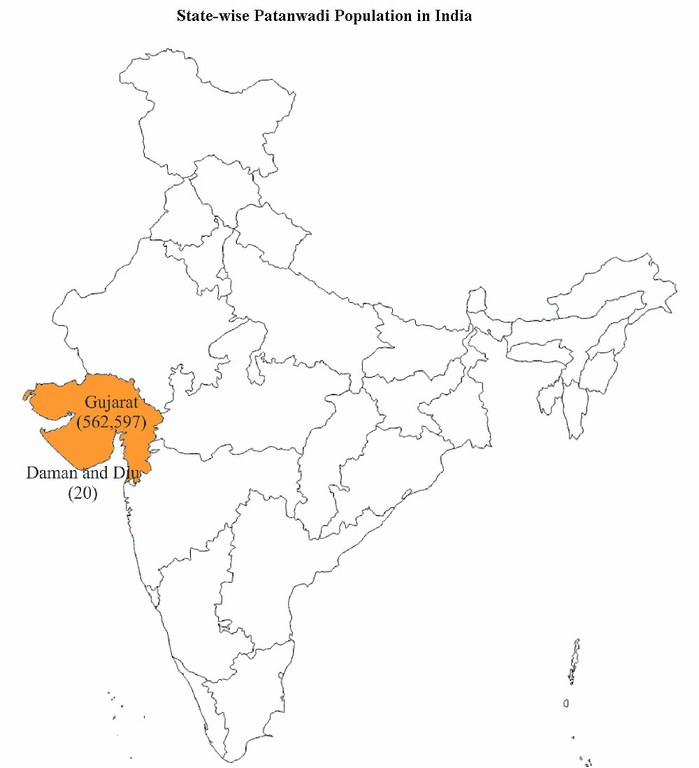Patanwadi
May 06, 2013
The Patanwadi (also called Desi, Kutchi, Kathiawari, Vadhiyari and Charotari) is found in the coastal plains of the Saurashtra and Kutch regions of Gujarat, and the sandy loamy areas of Patan, Panch Mahals and Mehsana districts of Gujarat.
 Three distinct strains are found - i) non-migratory, red-faced animals with small bodies, yielding relatively finer fleece. These are typical Patanwadis and are found in north eastern Saurashtra; ii) the migratory type, with a larger body and long legs, a typical Roman nose and long tubular ears. This variety, which has coarser fleece, is found in western and north eastern Gujarat; iii) the meat type, with a big body, low stature and a coarse fleece, found in the south eastern part of the state around Palitana. Patanwadi is a superior carpet-wool breed and requires efforts for conservation. Both sexes are polled. Lambing percentage on the basis of ewes bred is 79 and the litter size is generally single. Males, selected on the basis of body size, are generally bred in farmers' flocks. Ewes are milked for about 3 months. The average annual fleece weight is 1.17 kg for rams and 1.03 kg for ewes. The average fibre diameter and density is 32 μ and 960 cm2 respectively, with a medullation percentage of 30.
Three distinct strains are found - i) non-migratory, red-faced animals with small bodies, yielding relatively finer fleece. These are typical Patanwadis and are found in north eastern Saurashtra; ii) the migratory type, with a larger body and long legs, a typical Roman nose and long tubular ears. This variety, which has coarser fleece, is found in western and north eastern Gujarat; iii) the meat type, with a big body, low stature and a coarse fleece, found in the south eastern part of the state around Palitana. Patanwadi is a superior carpet-wool breed and requires efforts for conservation. Both sexes are polled. Lambing percentage on the basis of ewes bred is 79 and the litter size is generally single. Males, selected on the basis of body size, are generally bred in farmers' flocks. Ewes are milked for about 3 months. The average annual fleece weight is 1.17 kg for rams and 1.03 kg for ewes. The average fibre diameter and density is 32 μ and 960 cm2 respectively, with a medullation percentage of 30.
According to the 18th Livestock Census of 2007 there are 562,617 Patanwadi sheep in the country. (Refer to the maps below)
| Adult Male | Adult Female | |
|---|---|---|
| Average Body weight (kg) | 33 | 27 |
| Average Body length (cm) | 59 | 59 |
| Average Height at withers (cm) | 65 | 60 |
| Average Chest girth (cm) | 78 | 70 |


Text Source: http://www.fao.org/docrep/004/x6532e/X6532E02.htm#ch2.2.9
Photo Source: CSWRI, Avikanagar









